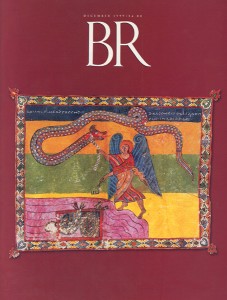And the Band Played On…But What Did They Play On?
Identifying the instruments in Nebuchadenezzar’s orchestra

The text itself is music. Like a refrain, the litany of instruments is repeated four times in chapter 3 of the Book of Daniel: “the cornet, flute, harp, sackbut, psaltery, and dulcimer, and all kinds of musick.” Like an insistent ostinato, the names Shadrach, Meshach and Abed-Nego—the three young Hebrew exiles who will be fed to the “fiery furnace”—are repeated 13 times in the same chapter. The introduction and coda—twice at the beginning and once at the end—are “the satraps, the administrators, the governors, the counselors, the treasurers, the judges, the magistrates, and all the officials of the provinces,” who are called together to hear the decree of King Nebuchadnezzar of Babylon. Anyone who fails to bow down to the king’s golden statue at the sound of the orchestra will be thrown to the flames, the king’s herald declares. Of course, you know the rest: The three Hebrews—Shadrach, Meshach and Abed-Nego—refuse to bow down, so they are tossed into the fire with their clothes on. But they remain unscathed: Not “a hair of their heads” is singed! Thus Nebuchadnezzar learns a little respect for the God of Shadrach, Meshach and Abed-Nego.
For sheer poetic beauty, it is difficult to surpass the 17th-century King James Version (also known as the Authorized Version), quoted above. Yet just what does this musical passage tell us about the orchestra that Nebuchadnezzar assembled?
Already a library member? Log in here.
Institution user? Log in with your IP address.

